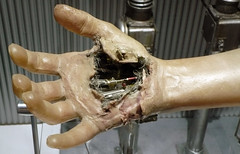
In the February Physical Medicine and Rehabilitation PM&R http://bit.ly/fRWtH9 Dr. Schultz and Kuiken from the Neural Engineering Center for Artificial Limbs, Rehabilitation Institute of Chicago; and Department of PM&R, Northwestern University Feinberg School of Medicine, Chicago USA discuss current treatment of upper limb amputation that restores some degree of functional ability. They state that although acceptance rates can be high when patients are highly motivated and receive proper training and care, current prostheses often fail to meet the daily needs of amputees and frequently are abandoned. Recent advancements in science and technology have led to promising methods of accessing neural information for communication or control. Researchers have explored invasive and noninvasive methods of connecting with muscles, nerves, or the brain to provide increased functionality for patients experiencing disease or injury, including amputation. These techniques offer hope of more natural and intuitive prosthesis control, and therefore increased quality of life for amputees.
The combination of real time movement guidance and visual augmented feedback given during and after completion of the virtual functional exercise task allows patients to learn how to move their hands. In this way, the HandTutor system will allow patient’s with prosthetic hands to learn how to do isolated and coordinated finger movements. The HandTutor system is being used to improve hand movement dysfunction in patients post stroke, spinal cord injury and cerebral palsy as well as other neurological and orthopedic arm injury and disease.
No comments:
Post a Comment